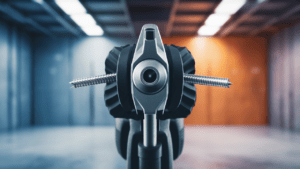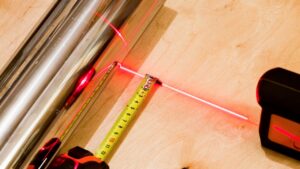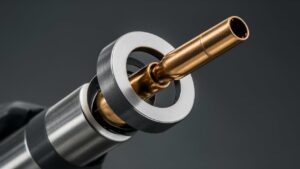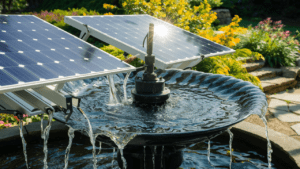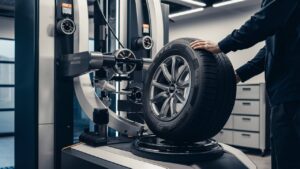To weld with a 110V stick welder, ensure proper electrode selection and amperage settings. Practice on scrap metal beforehand.
Welding with a 110V stick welder can be a useful skill for DIY enthusiasts or small-scale projects. Understanding the basics of electrode selection and amperage settings is crucial for successful welds. By practicing on scrap metal first, you can hone your technique and gain confidence before tackling your actual project.
In this guide, we will explore the key steps and tips to help you weld effectively with a 110V stick welder. Let’s dive in and master the art of stick welding with a 110V machine!
The Basics Of 110v Stick Welding
When it comes to welding with a 110V stick welder, selecting the right equipment is crucial. The Basics of 110V Stick Welding involve understanding electrode types. It’s important to choose the appropriate electrode for the material being welded. Additionally, ensuring that the work area is clean and free of any flammable materials is essential for safety. Moreover, maintaining the correct angle and travel speed during welding can significantly impact the quality of the weld.
Safety First: Prepping Your Workspace
Personal Protective Equipment (PPE) is essential when working with a 110V stick welder. It includes safety glasses, welding gloves, a welding helmet, and flame-resistant clothing. The PPE protects you from sparks, ultraviolet light, and the heat generated during the welding process.
Before you begin welding, ensure that your workspace meets the necessary requirements. Clear any flammable materials or debris from the area to minimize fire hazards. Make sure you have adequate ventilation to prevent the accumulation of harmful fumes.
It is also crucial to have a stable and secure workbench or welding table to support your materials. This will ensure that they do not shift or fall during the welding process.
By following these safety precautions and preparing your workspace properly, you can minimize the risk of accidents and injuries while welding with a 110V stick welder.
Setting Up Your 110v Stick Welder
When setting up your 110V stick welder, start by carefully reading the instruction manual for machine assembly. Ensure that the power requirements are met and make the necessary connections. For safety, double-check all connections before turning on the welder.
Choosing The Right Electrodes
When choosing the right electrodes for welding with a 110V stick welder, there are two important factors to consider: the type of material being welded and the amperage and electrode diameter required.
For different materials, such as mild steel, stainless steel, or cast iron, specific electrodes are designed to provide the best results. These electrodes have different compositions and coatings to match the properties of each material.
Amperage and electrode diameter also play a crucial role in the welding process. Higher amperage is required for thicker materials, while thinner materials require lower amperage. Similarly, electrode diameter should be chosen based on the thickness of the metal being welded.
By carefully selecting the appropriate electrodes based on material and considering the amperage and electrode diameter requirements, welders can ensure strong and effective welds with a 110V stick welder.
Strike An Arc: Mastering The Technique
When it comes to welding with a 110V stick welder, mastering the technique of striking an arc is crucial. There are different methods for striking an arc with a stick welder, including scratch start and tapping. It is important to maintain arc stability throughout the welding process to ensure a strong and durable weld. By practicing and honing your skills, you can become proficient in striking an arc and producing high-quality welds with a 110V stick welder.

Controlling Heat And Speed
Controlling heat and speed is essential when welding with a 110V stick welder. By adjusting the heat settings and controlling the speed of your movements, you can achieve precise and clean welds. Mastering these techniques will result in high-quality welds with a 110V stick welder.
| To control heat, adjust amperage settings based on material thickness and type. |
| For optimal results, match travel speed with heat input to create strong welds. |
Common Welding Problems And Solutions
Welding with a 110V stick welder can pose common problems such as poor penetration, sticking electrodes, and improper bead formation. To address these issues, ensure proper electrode selection, maintain a consistent arc length, and clean the base metal thoroughly before welding.
Additionally, adjusting the amperage and practicing proper welding techniques can help achieve successful welds.
| Troubleshooting Poor Welds | Dealing With Weld Spatter and Cracking |
| Ensure proper electrode size and type for the job. | Inspect base metal for contaminants before welding. |
| Check ground connection to avoid spatter issues. | Preheat metal to prevent cracking during welding. |
Post-welding Processes
|
After completing the welding process, clean the weld area thoroughly to remove any debris or contaminants. Next, inspect the weld for any defects or inconsistencies to ensure its quality and structural integrity. Conduct testing on the weld, such as visual inspection or non-destructive testing, to verify its strength and durability. |
Advanced Tips For Skilled Welders
For skilled welders looking to weld with a 110V stick welder, here are some advanced tips to enhance your welding technique. Mastering proper electrode selection, maintaining a steady arc length, and adjusting amperage settings are key to achieving high-quality welds with this type of welder.
With practice and attention to detail, you can maximize the performance of your 110V stick welder and produce professional results.
| Advanced Tips for Skilled Welders |
| When welding in different positions, maintain proper technique for quality welds. |
| Adjust your body angle and torch position when working with thin materials. |
Projects To Practice Your Skills
When using a 110V stick welder, practice your skills with simple projects for beginners such as welding a basic steel frame or creating a small metal sculpture. For more advanced users, consider challenging projects like fabricating a custom metal gate or welding together a utility trailer. These projects will allow you to improve your welding techniques and gain confidence in working with different types of metals. Additionally, you can explore creating decorative metal artwork or welding repairs on existing metal structures to further enhance your welding abilities.
Frequently Asked Questions
How Do I Weld With A 110v Stick Welder?
To weld with a 110V stick welder, you need to prepare the workpiece, set up your welder, and strike an arc. You then need to maintain a steady arc length, move the electrode along the joint, and create a smooth bead.
Finally, you need to clean up the weld and remove any slag.
What Type Of Electrode Do I Need For A 110v Stick Welder?
For a 110V stick welder, you’ll need to use an electrode that matches your base metal. Typically, you’ll use a 6011 or 6013 electrode for mild steel, while a 7018 electrode is ideal for thicker steel. Be sure to check the manufacturer’s recommendations for your specific welder.
Can I Weld Aluminum With A 110v Stick Welder?
No, a 110V stick welder is not suitable for welding aluminum. Aluminum requires a different welding process and a specialized welder, such as a TIG or MIG welder. Trying to weld aluminum with a stick welder can result in poor quality welds and damage to the workpiece.
How Thick Of Metal Can I Weld With A 110v Stick Welder?
A 110V stick welder is best suited for welding thinner materials, typically up to 3/16 inch thick. Thicker materials may require multiple passes or a different welding process. Be sure to check the manufacturer’s recommendations for your specific welder and materials.
Conclusion
To sum it up, welding with a 110V stick welder is not as complicated as it seems. By following the steps outlined in this guide, you can successfully weld metal using this equipment. Remember to prioritize safety by wearing protective gear and setting up your workspace correctly.
With practice and patience, you can become proficient at welding with a 110V stick welder and complete DIY projects with ease. Happy welding!


